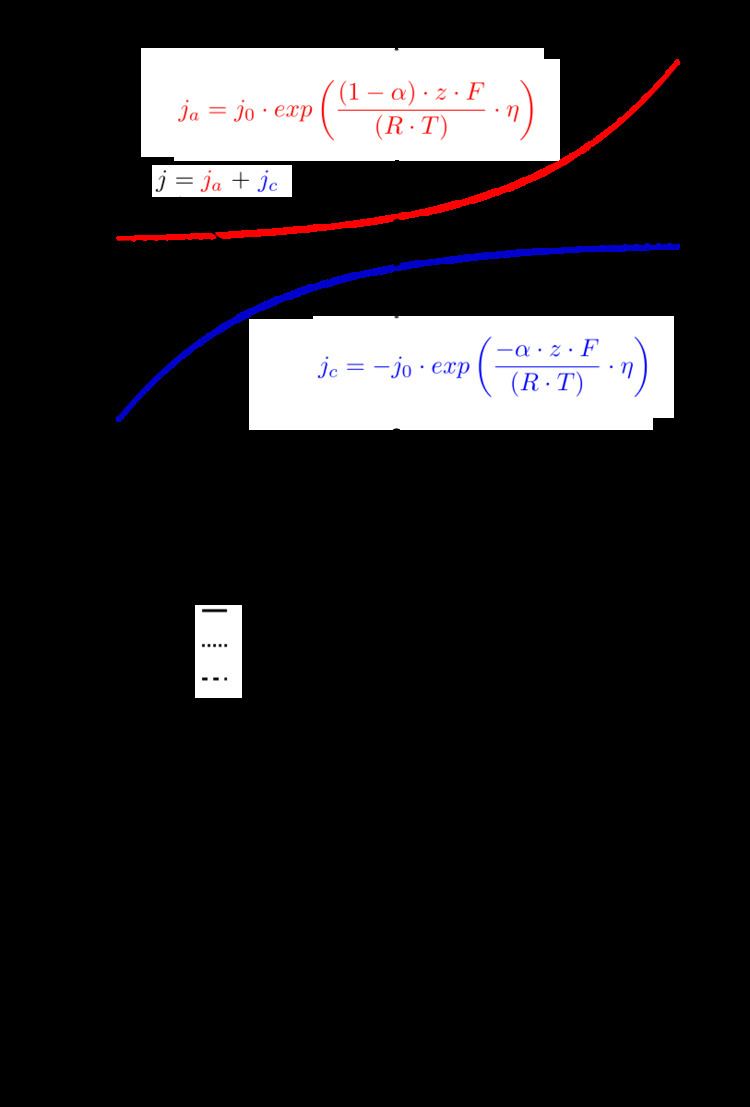 | ||
The Butler–Volmer equation (also known as Erdey-Grúz-Volmer equation) is one of the most fundamental relationships in electrochemical kinetics. It describes how the electrical current on an electrode depends on the electrode potential, considering that both a cathodic and an anodic reaction occur on the same electrode:
Contents
or in a more compact form:
where:
The right hand figure shows plots valid for αa=1-αc.
The equation is named after chemists John Alfred Valentine Butler and Max Volmer.
Mass-transfer control
The previous form of Butler–Volmer equation is valid when the electrode reaction is controlled by electrical charge transfer at the electrode (and not by the mass transfer to or from the electrode surface from or to the bulk electrolyte). Nevertheless, the utility of the Butler–Volmer equation in electrochemistry is wide, and it is often considered to be "central in the phenomenological electrode kinetics".
In the region of the limiting current, when the electrode process is mass-transfer controlled, the value of the current density is:
where:
The above form simplifies to the conventional one (shown at the top of the article) when the concentration of the electroactive species at the surface is equal to that in the bulk.
The limiting cases
There are two limiting cases of the Butler–Volmer equation:
where a and b are constants (for a given reaction and temperature) and are called the Tafel equation constants. The theoretical values of a and b are different for the cathodic and anodic processes.
